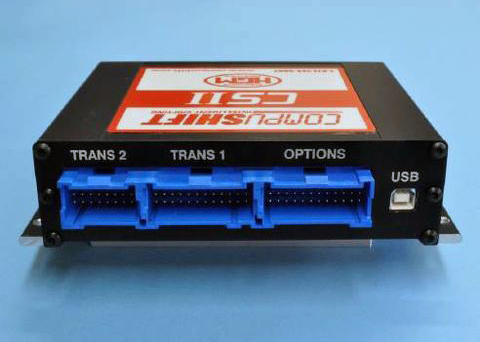
Automotive manufacturers typically produce parts in quantities ranging from 10,000 to millions at a time. But some companies, like HGM Automotive Electronics, specialize in lower-volume, custom manufacturing.
HGM develops and manufactures control systems that transform vehicles from manual to automatic transmission. From hotrods to hybrids to heavy trucking vehicles, HGM is a global leader in designing custom aftermarket automotive electronics.
Custom development, from prototyping to testing, can be very costly, and precision and accuracy before production begins are paramount. In order to increase the efficiency of HGM’s pre-production processes and to safeguard against financial risks associated with manufacturing prototypes, Engineering Director Guy Cardwell began the search for a 3D printer.
The MakerGear M2 caught his attention because of its highly rated construction and record of reliability. Knowing his team could count on the M2 to print production parts 24/7 was also key in Cardwell’s decision to introduce MakerGear into HGM’s workflow.
“A stiffer frame, high-quality components and linear bearings mean good dimensional accuracy, so our CAD models match the final product,” Cardwell says.
Other key features of the M2, such as the wide range of nozzle temperatures that allow for printing in a variety of materials, and the fact that the printer is ready to print right out of the box, also convinced Cardwell the M2 was perfect for HGM.

HGM uses the M2 to produce custom fixtures and tooling for each sub-assembly. This in turn reduces setup and testing time, as well as tooling costs. Because all components must be programmed and rigorously tested, HGM is able to reduce production time and costs without sacrificing its strict quality control standards.
“With traditional, subtractive machining techniques, the fastest turnaround would be several days, even with the best service, and would cost us $500 to $1000,” Cardwell says. “With our MakerGear M2, each custom fixture takes about two hours and $3 of material to produce.”
HGM has a full machine shop and could do all of this without 3D printing. It’s just not cost effective, Cardwell says.
“My time is important to me, and with 3D printing I can achieve immense time and cost savings by avoiding cutting plastic, placing the part in a vice, running expensive equipment, and tool changes,” he says.
In addition, because HGM prints built-to-spec samples to send to manufacturing partners, the company is able to ensure that the first production run produces results.
“3D printing introduced an element of safety to my business,” Cardwell says. “It allows our team to pursue new opportunities without taking huge risks.”